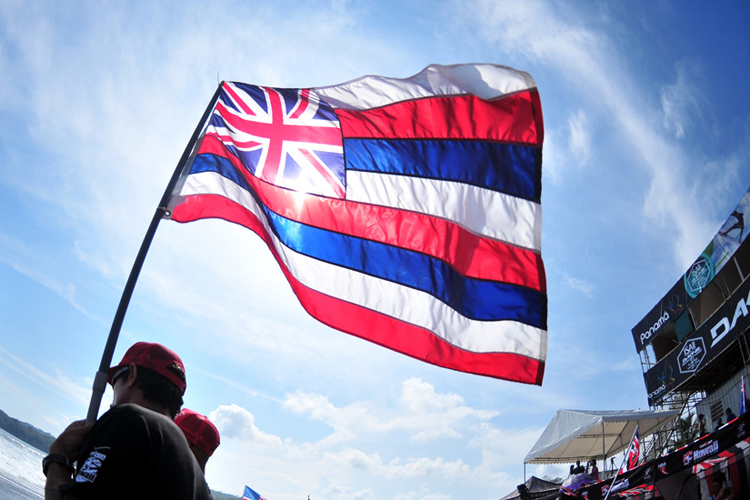Hawaiian surfers are proud of their flag. Whenever they win a surf contest, they raise and wave the red, blue, and white streamers. Let's unveil the secrets of the Hawaiian flag.
With its unusual blend of the Union Jack of Great Britain and stripes reminiscent of the United States, the Hawaiian flag stands as an intriguing paradox.
An emblem that whispers of colonial history, Pacific location, and a proudly independent kingdom, the Hawaiian flag has a story that is as captivating as it is confounding.
Politically and in the past couple of centuries, the Hawaiian Islands have been a kingdom, a protectorate, a republic, and a state. As a result, several flags have been unfurled.
For many people, it is still intriguing to see a Hawaiian banner with British and American symbols.
So, why is the Union Jack on the Hawaiian flag? And who designed the Hawaiian streamer?
The current flag of Hawaii ("Ka Hae Hawaii," in the local language) was adopted on December 29, 1845.
It was designed based on an earlier version announced in 1816 by King Kamehameha I, the first monarch of the Kingdom of Hawaii.

A Hybrid Flag
Three decades before, in 1784, Hawaii voluntarily "joined" the British Empire.
Kamehameha I had commanding power over the Pacific archipelago, but he recognized King George III as emperor.
However, the influence of the United States and its Protestant missionaries was growing fast in Hawaii.
To avoid unwanted disputes, the King of Hawaii unveiled a hybrid version that included plain references to both countries.
The design of the flag is said to reflect this delicate diplomatic balance.
Eight alternating red, white, and blue stripes span the flag, representing the eight main islands of the archipelago: Hawaii, Oahu, Kauai, Kahoolawe, Lanai, Maui, Molokai, and Niihau.
But the captivating piece of the Hawaiian flag is nestled in the top left corner: a British Union Jack.
The choice of the Union Jack was a nod to Captain George Vancouver, a British subject who gifted the Hawaiian Kingdom a Union Jack after his ship, HMS Discovery, stopped on the islands in the 1790s.
It was believed that the flag's inclusion signified the protectorate status offered by Great Britain.
However, the design also reflects the American influence.
The red, white, and blue colors were not just chosen at random - they mirrored the colors of the Stars and Stripes.
Tactical Neutrality
Thus, the flag represented a visible fusion of both British and American symbolism, a strategic move reflecting Hawaii's neutrality and the islands' international alliance.
Alexander Adams or George Beckley? It is still not clear who designed it.
The flag flew in the Hawaiian skies for 29 years, only to be slightly revised in 1845 during the Reciprocity Treaty era, a free trade agreement between the United States and the Polynesian kingdom.
The Hawaiian flag hasn't changed since 1845.
After the overthrow of the Hawaiian Kingdom in 1893, it briefly fell out of official use.
However, it was reinstated as the flag of the Republic of Hawaii, a status it maintained when Hawaii became a U.S. territory in 1898 and later a state in 1959.
As of today, it is the only American state flag with the famous Union Jack.
It's a symbol of the islands' complex past and multicultural present, a unique fusion of disparate elements, unlike any other state flag in the U.S.
The Aloha State's motto is: "The life of the land is perpetuated in righteousness."
